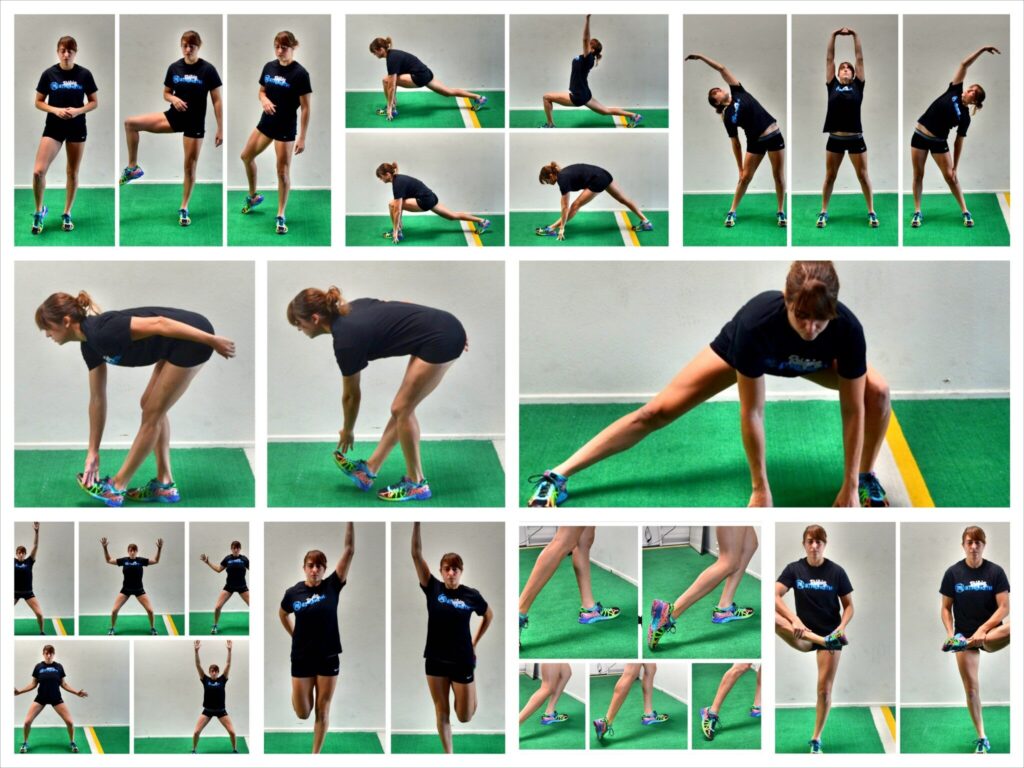Dynamic stretching is a crucial component of any well-rounded warm-up routine. Unlike static stretching, which involves holding a position for an extended period, dynamic stretching focuses on controlled, active movements that prepare the body for exercise. By gradually increasing muscle elasticity and joint mobility, athletes and fitness enthusiasts can improve performance and reduce the likelihood of injury.

Benefits of Dynamic Stretching
Dynamic stretching improves joint mobility and flexibility by taking muscles through their full range of motion. This increased flexibility helps in performing exercises with better form and efficiency.
A proper dynamic warm-up reduces muscle stiffness and prepares the body for explosive movements. This process minimizes the risk of strains and sprains, common when muscles are not adequately warmed up.
By gradually increasing heart rate and blood flow, dynamic stretching ensures oxygen-rich blood reaches the working muscles. This prepares the cardiovascular system for more intense activity and helps prevent sudden exertion-related injuries.
It also enhances neuromuscular coordination, vital for agility and quick directional changes. This is particularly beneficial for athletes involved in sports requiring speed and rapid movement transitions.
Key Principles of Effective Dynamic Warm-ups

Dynamic stretches should be performed before workouts or sports activities, typically lasting 5 to 10 minutes. The duration depends on the intensity of the upcoming exercise and individual flexibility levels.
Each sport requires specific movements, and dynamic warm-ups should reflect these needs. For instance, a sprinter may focus on high knees and leg swings, while a swimmer may prioritize shoulder rotations and arm circles.
Dynamic stretching involves controlled, gradual movements rather than forceful or jerky motions. Ballistic stretching, which includes bouncing movements, can increase injury risk and should be avoided unless performed under professional supervision.
Best Dynamic Stretching Warm-ups for Flexibility & Agility
Lower Body Dynamic Stretches
- Leg Swings (Front-to-Back, Side-to-Side): Improve hip flexibility and loosen tight leg muscles.
- Walking Lunges with a Twist: Engage the core while stretching the hip flexors and lower body muscles.
- High Knees and Butt Kicks: Activate the quadriceps, hamstrings, and calves while boosting heart rate.
- Hip Circles and Openers: Improve hip mobility and prepare the lower body for lateral movements.
Upper Body Dynamic Stretches
- Arm Circles and Cross-Body Swings: Enhance shoulder flexibility and mobility.
- Shoulder Rolls and Spinal Rotations: Loosen upper body muscles and improve posture.
- Dynamic Chest and Back Openers: Prepare the chest, shoulders, and back for pushing and pulling movements.
Full-Body Movement Drills
- Inchworm Stretch: Engages the core, hamstrings, and shoulders while warming up the entire body.
- Dynamic Side Lunges: Improve lateral movement and hip flexibility.
- Jump Squats and Lateral Bounds: Activate fast-twitch muscle fibers for explosive strength.
- Skater Hops for Agility Training: Enhance balance and agility through lateral jumping motions.
How to Incorporate Dynamic Stretching into Your Routine
Athletes should tailor their dynamic warm-ups to their sport’s demands. For instance, basketball players may include lateral lunges and agility drills, while runners benefit from high knees and leg swings.
A dynamic stretching routine should last 5-10 minutes, ensuring all major muscle groups are adequately activated without causing fatigue before exercise. Integrating agility-focused drills, such as ladder or cone drills, enhances coordination and prepares the body for quick movements required in sports and high-intensity workouts.
Common Mistakes and How to Avoid Them
Performing dynamic stretches too quickly reduces their effectiveness and increases the risk of injury. Controlled, deliberate movements maximize flexibility benefits.
Static stretching before exercise can reduce muscle power and increase the risk of injury. Dynamic movements are more effective for pre-workout preparation.
A well-balanced dynamic stretching routine should target all major muscle groups. Neglecting specific areas, such as the hip flexors or shoulders, can lead to muscle imbalances and decreased performance.
Frequently Asked Questions
How does dynamic stretching differ from static stretching?
Dynamic stretching involves active movements that prepare the body for exercise, while static stretching involves holding a position for extended periods, typically used for post-workout recovery.
Can dynamic stretching improve athletic performance?
Yes, dynamic stretching enhances flexibility, mobility, and neuromuscular coordination, improving performance in sports and fitness activities.
How long should a dynamic warm-up last?
A dynamic warm-up should last between 5-10 minutes, depending on the intensity of the upcoming activity.


